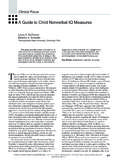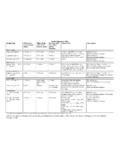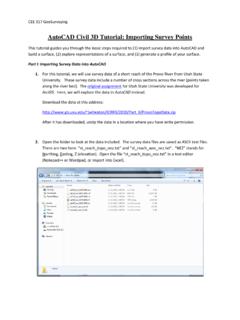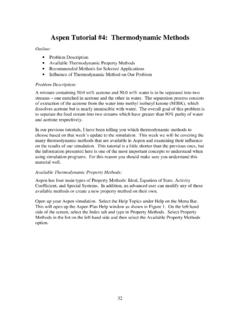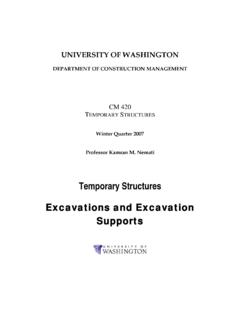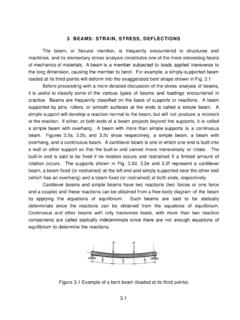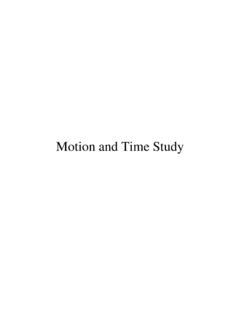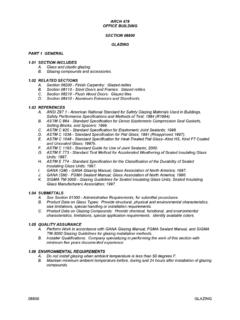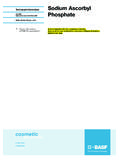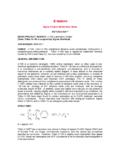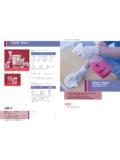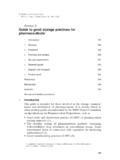Transcription of Lesson 2: Understanding expressions of drug …
1 Lesson 2: Understanding expressions of drug amountsAll pharmaceutical preparations have some sort of ingredient amount associated with them, which many health careprofessionals refer to as strength. This term is sometimes used incorrectly as you can see in the box below. Drugamounts in products containing only one drug are quite easy to understand, since the units are most often metric( , 250mg/capsule, ) or less often expressed in grains (with which you are now familiar, of course!).The following information is meant to give you some background on other ways drug amounts are , potency, and effectiveness Strength is the amount of drug in a given dosage form, for example, 500 mg/tablet. Potency refers to the relative strengths of medications that can produce the same effect. The drug with thelowest strength to produce the effect is said to be the most potent. Strength is often used interchangeably withpotency, but they are not the same thing.
2 Potency starts with the effect and examines the relative strengths ofdifferent drugs able to produce that effect, while the word strength itself does not imply anything about effect. Effectiveness refers to the percent of patients who will have a desired response to a drug . Strength can beconfused with effectiveness when a patient asks if one drug is stronger than another. What the patient reallywants to know is whether one drug is more likely to produce a desired effect compared to the drugs strengths are expressed in terms of units of activity according to some biologic assay. Common drugsfor which units are used include penicillin, insulin, bacitracin, heparin, nystatin, polymixin, and vitamins A, D, andE. Metric equivalency to units varies, with each drug using a unit system of measurement having its ownconversion factor. For example: penicillin 400,000 units = 250mg nystatin 4400 units 1mg insulin 100 units/ml of insulin suspension.
3 Therefore 1 insulin unit = 10 L of insulin suspension vitamin A 1 unit = g of all-trans retinol, g of all-trans retinol acetate, or g of beta carotene; hereyou can see that the unit conversion varies with the form of vitamin A usedYou do not need to memorize these unit equivalents, since you will rarely ever need to convert. If you do need toconvert in practice, you can look the conversion up (AHFS drug Information is a good source of information aboutunit equivalents; Facts and Comparisons also contains some information).PartsParts indicate amount proportions. Parts are most often used for medication compounding to indicate the relativeamounts of each ingredient. Parts themselves are unitless, because you decide what the units will be. Just rememberthat you must use the same units for each ingredient ( , you can t use grams for one ingredient and ounces foranother). It will be easiest to choose grams as the unit if you are dealing with a solid ingredient and milliliters if youare dealing with liquid since most of your measuring instruments will use metric an example, consider the following recipe for an antacid powder:calcium carbonatemagnesium oxide5:1:4:3sodium bicarbonatebismuth subcarbonatedissolve in 8 ounces of water and drink prn indigestionNotice that the parts are separated with a colon.
4 You will assume that the order of each number corresponds to theorder of the list of ingredients . Thus, there are 5 parts of calcium carbonate, 1 part of magnesium oxide, 4 parts ofsodium bicarbonate, and 3 parts of bismuth easiest way to make this would be to mix 5 g of calcium carbonate, 1g of magnesium oxide, 4g of sodiumbicarbonate, and 3g of the bismuth subcarbonate, for each dose. The patient may, however, need more than onedose, so you may decide to mix a 300g supply. In this case, you will use the parts to tell you the ratio of the2ingredients. You know that 5+1+4+3 = 13 total parts, and you know that the total weight is 300g. Now you can justuse simple proportions to solve the amounts for , 5 parts Ca(CO3)2=xx = 115 g calcium carbonate13 parts total300g1 part MgO=yy = 23 g magnesium oxide13 parts total300g4 parts NaHCO3=zz = 92 g sodium bicarbonate13 parts total300g3 parts (BiO)2CO3=ww = 69 g bismuth subcarbonate13 parts total300gOccasionally, you will see a number followed by the term ppm.
5 This stands for parts per million and is mostoften used to indicate the amount of trace substances in water. The standard dilution for fluoride added to amunicipal water source, for example, is 1ppm. In every 1,000,000ml of water, therefore, there is 1g of get the and topical preparation strengths are called concentrations and involve two numbers written in fraction numerator will always tell you the amount of the drug that is the denominator, which is a given volume of drugplus vehicle. Put more simply, concentration tells you how much drug there is in a given dosage form are expressed as weight/volume (w/v) with the weight being the amount of drug and the volumerepresenting a specific volume of drug and vehicle. An example of this type of concentration is Benadryl elixir. Ifyou look on the side of the bottle, you will read that it has a concentration of This means that 5ml ofthe elixir will contain of diphenhydramine (the active ingredient).
6 Solid topical medication concentrations are usually expressed as weight/weight (w/w), with the numeratorrepresenting the weight (mass) of drug present in the denominator, which is a total weight of drug plus vehicle. Anexample is nystatin cream, which is available in a concentration of 100,000 units/g. This means that there are100,000 units of nystatin in each gram of cream that you squeeze out of the , you will see liquid forms of drugs expressed as volume/volume (v/v), with the first volume numberexpressing the volume of liquid medication added, and the second volume number representing the total volume ofmedication plus vehicle. An example is ethanol 10ml/100ml, where 10ml of absolute ethanol ( , 100% ethanol) isadded to enough water (around 90ml, although bonding forces may fractionally affect the volume of the water) tomake a total of 100ml of all concentrations are expressed as weight/weight or weight/volume, you will most often see the solidtopical ( , things applied to the outside of the body) medications expressed as percentage strength and infrequentlyas ratio strength.
7 Percentage strength and ratio strength are just two different ways of expressing the same thing thatstandard weight/weight or weight/volume concentration expresses and are explained StrengthMedication concentrations are often written as a number followed by a percent sign ( , 2%), which implies aspecific weight/volume concentration of g/100 units. For a liquid, the units will be milliliters ( , 5% = 5g/100ml).In a solid, the units will be grams, so percentage would imply g active medication/100g total dosage form. Forinstance, a common OTC cream is hydrocortisone 1%. This means that there is 1 gram of hydrocortisone in each100 grams of cream. An example of a liquid product is Hibiclens, a topical antiseptic. If you read the fine print onthe bottle, you will notice that it contains 4% w/v chlorhexidine gluconate. Thus, there are 4g of chlorhexidinegluconate in every 100ml of Hibiclens solution. Almost all topical products ( creams, gels, pastes) are expressedin percentage special type of percentage is the mg%.
8 This means mg/100ml or mg/100g. You will rarely encounter thisexpression in a commercial product, but will see it frequently used to express laboratory values ( , the numbersthat are generated after analysis of the constituents in someone s blood). For instance, creatinine (a byproduct ofmuscle breakdown that can provide an indication of how well a person s kidneys are working) is often reported as mg% and sometimes as mg/dL, both of which mean that there is mg of creatinine in every 100ml StrengthRatio strength can be used to describe the concentration of a dilute solution. In ratio strength, the first number is a 1and it is followed by a colon and then another number, , 1:100. These can be read as parts ( , 1 part in 100parts). You assign the units. The units are always grams or milliliters, depending upon whether you are dealing witha w/w or w/v preparation. Thus a 1:100 ratio strength would mean a solution with 1g in 100ml, or it might mean asolid preparation, say 1g of drug in 100g of ointment.
9 You will use the word in to verbally express the relationshipbetween the two numbers. Thus, an epinephrine 1:1000 ratio strength solution would be pronounced epinephrine one in one thousand and would refer to a solution that contains 1 gram of solute in every 1000ml of RatiosA solubility ratio, more commonly just called solubility, is the maximal amount of a solute (hereafter referred to as adrug, since that s what we pharmacists care about) that will go into solution in a given amount of solvent. Once thatmaximal solubility is reached, addition of more drug will result in precipitation of that drug out of the solution,which you will see as a layer of crystals or crud at the bottom of the container holding the solution. You can find thesolubility of each drug in references such as the United States National Formulary or, if you don t know anyone richenough to afford this, in the Merck Index. The American Hospital Formulary drug Information text also listssolubility ratios for some drugs.
10 Solubilities are most often expressed in one of two ways. As a concentration. This will be the easiest kind of solubility for you to deal with. For example, ceftriaxone, aninjectable antibiotic, is stated to have a solubility in water of 400mg/ml at 25 C (room temperature). This meansthat if you try to place 500mg in 1ml at 25 C, you will get a layer of stuff at the bottom of the vial. Qualitatively. Drugs will be described in words, rather than numbers. For example, cefazolin, another antibiotic,is described as freely soluble in water. This can be frustrating when a physician is on the phone asking if apatient who cannot swallow a tablet could instead receive the drug in liquid form and you find that not only isthere no liquid form but that the drug is slightly soluble in water. What does this mean? Fortunately, there areguidelines that will give you a rough conversion of the qualitative term to a quantitative of solvent to one part of drugvery solublefreely solublesolublesparingly solubleslightly solublevery slightly solubleinsoluble (also practically insoluble)less than 11-1010-3030-100100-10001000-10,000>10,0 00 Similar to ratio strength, the units are always grams for solids and milliliters for this, you would see that the freely soluble cefazolin would allow 1 gram to be placed in between 1 and 10milliliters, but the slightly soluble allopurinol that the physician called you about would need to be in a muchmore dilute solution.
